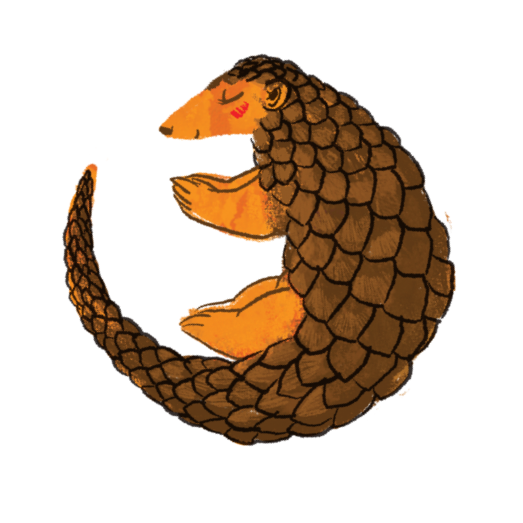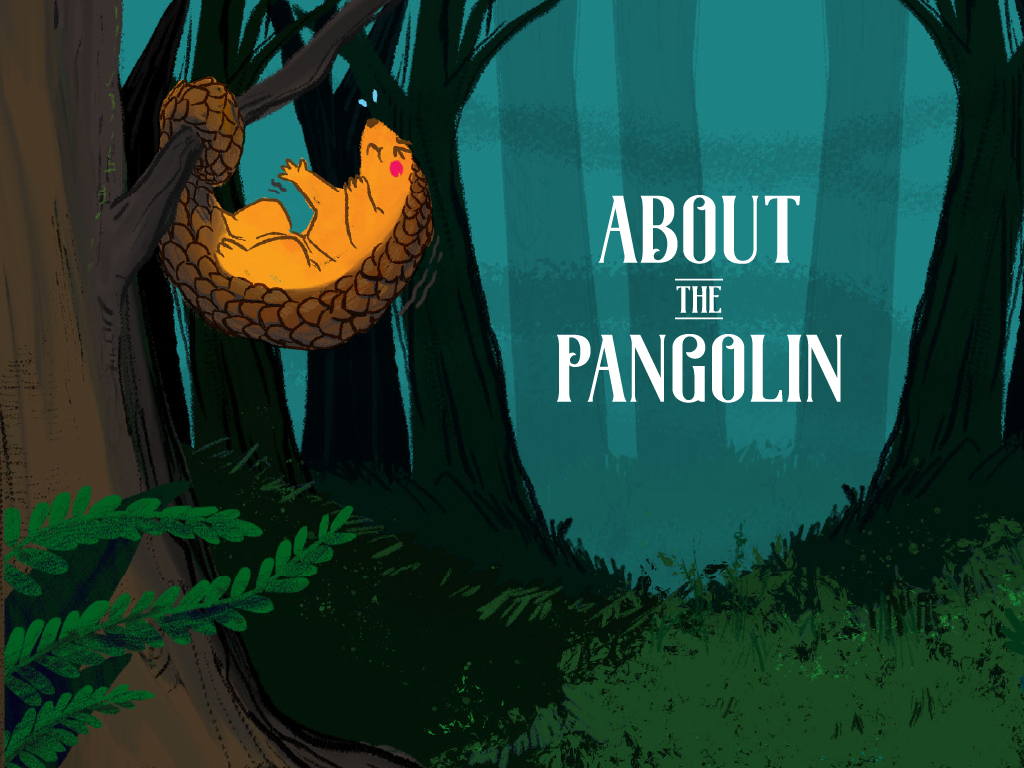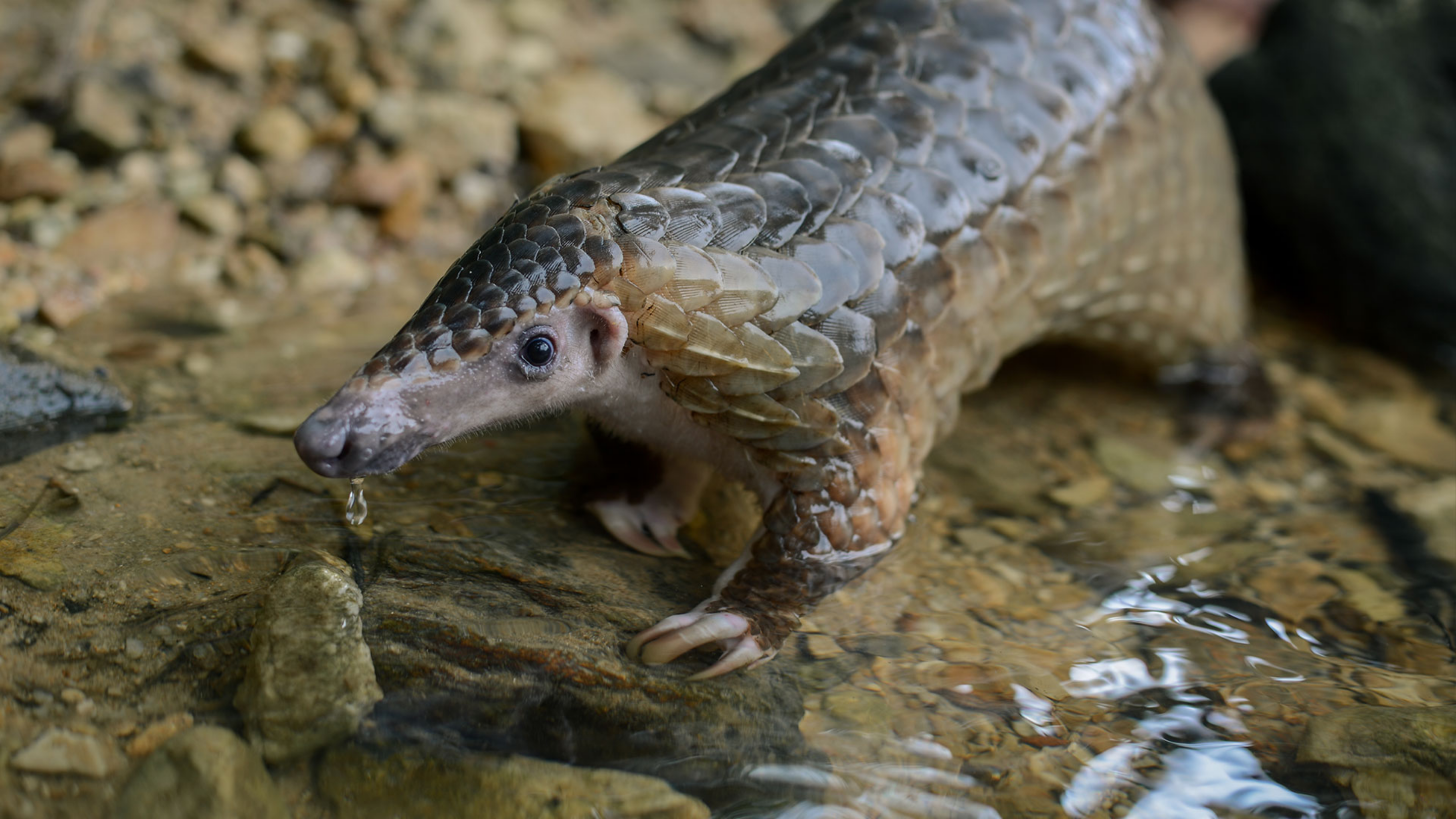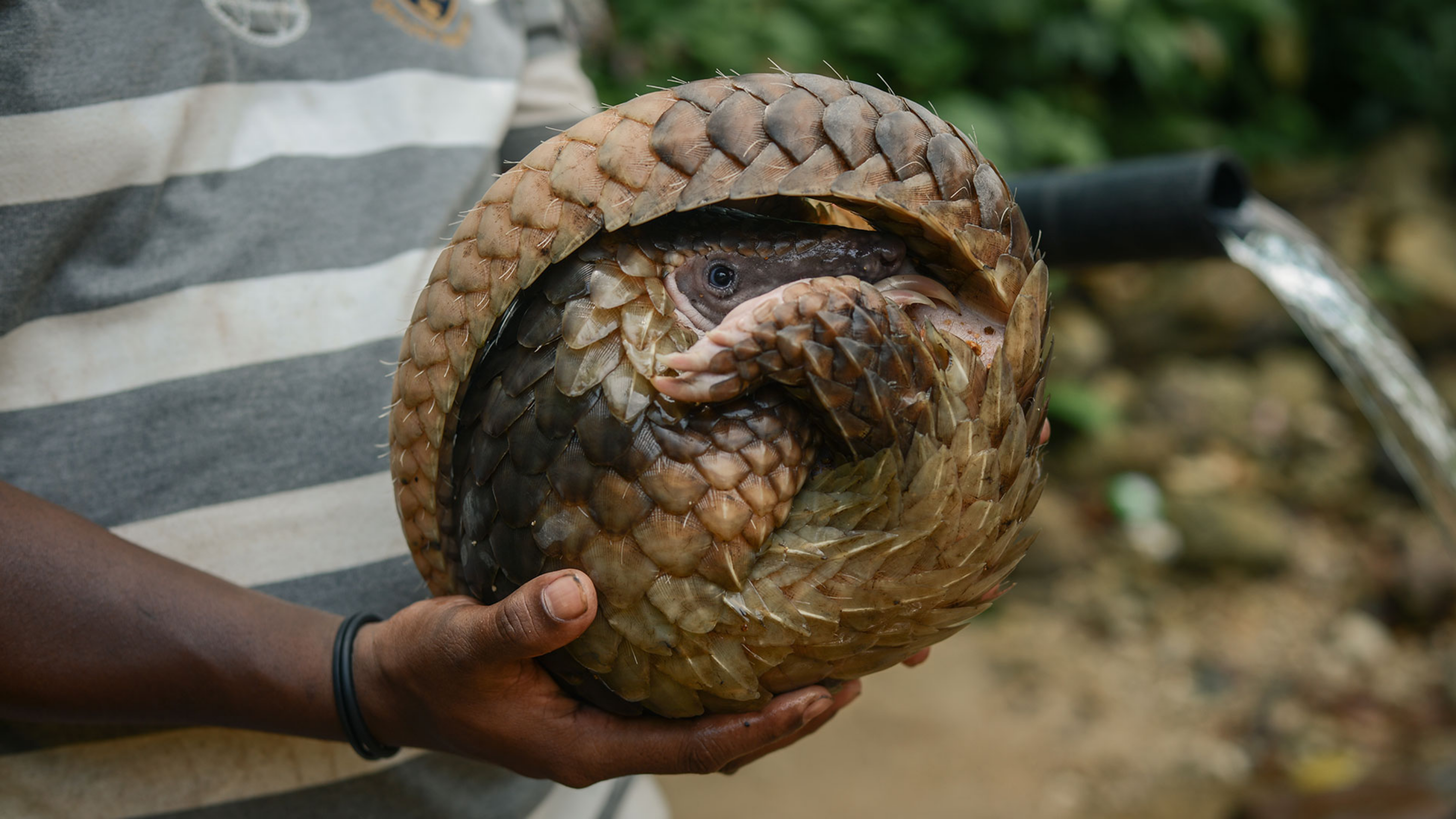Learn about pangolins from:



Learn about pangolins from:

About the pangolin (according to Orang Asli)
One day, the pangolin was minding his own business in the jungle. Perhaps he was daydreaming or slurping away at ants near a forest trail.
By pure forest chance, an elephant comes along and finds the pangolin in his path.
“This thing is in my way,” thought the elephant, and uncurled his trunk towards the pangolin, intending to toss it aside.
But just as his trunk touches the pangolin, the pangolin wakes with a start, and in a fit of fear curls his body around the elephant’s trunk. Now it is the elephant’s turn to be startled.
He swings his trunk violently to shake off the pangolin, but the pangolin only tightens his grip further. In fact, the more the elephant struggles, the tighter the pangolin’s grip grows.
Tighter and tighter, until the elephant cannot breathe because his trunk is squeezed shut. The elephant thrashes and swings, crashing against tree trunks, but the pangolin never lets go.
Some say the elephant dies in the end, while the pangolin walks away alive. Others say the pangolin dies with the elephant.
Still others say the elephant was mischievous and being punished by a spirit who took the pangolin’s form.
Some indigenous groups tell completely different stories, about how pangolins are close to humans because they are a reincarnation of the placenta at childbirth.
These stories change and shift according to the storyteller, and like most oral history, no one can tell whose version is right or wrong, and only broad themes are agreed on. After all, what is right and wrong compared to good and bad?
Since then, elephants have always been afraid of pangolins. Where there are pangolins, there are no elephants. And if you take the scales of the pangolin and burn them in a fire, the elephant can smell the smoke from miles away and knows to keep his distance.
The bonfire slows, and the village elders come to the end of their story. The night will turn chilly soon, and the insects louder. Then the sky will slip across the unmoving earth and bring the morning.
Story told by:
The elders of Kampung Ong Jangking and Kampung Sungai Papan
Additional information from:
Tenggiling Sunda, Khazanah Alam Malaysia by Chong Ju Lian and Muhammad Hafiz Sulaiman
Kisah-kisah Haiwan Orang Asli by Lim Boo Liat
Flying Lizards and Other Orang Asli Legends and Tales edited by Colin Nicholas
About the pangolin (according to conventionally certified experts)

Pangolins are a species of nocturnal scaly anteaters, found in tropical and subtropical regions. Of the eight known species of pangolins, one is endemic to Malaysia – the Sunda pangolin (scientific name Manis javanica).
Its name is derived from the Malay word “pengguling”, meaning “one who rolls up”. However, Malays call the animal “tenggiling”.
It uses its scales as a defence mechanism, rolling up into a tight ball when threatened, with the scales forming an armour that is almost impenetrable by predators.

It has a long, sticky tongue that it uses to feed on ants and termites.
Although pangolin scales are chemically similar to human fingernails, many believe it has medicinal properties and use it in traditional Chinese medicine. This belief is unproven by modern science.
Its meat is also often served as a delicacy in China and the Indochina region.
This belief fuels an unsustainable demand for pangolins. Today, the pangolin is known as the most trafficked mammal on earth, and is under threat of extinction.
In Malaysia, the pangolin is listed as a “totally protected” species, meaning hunting and possession of the animal without a license can result in fines and jail time.
Pangolins, like all flora and fauna, play an important role in keeping a balanced ecosystem. They are known to be an excellent form of natural pest control, eating up to 20,000 ants or termites a day.
The burrows they dig help aerate the forest soil, and other animals have been observed to use their burrows to sleep in.